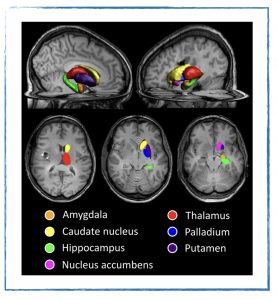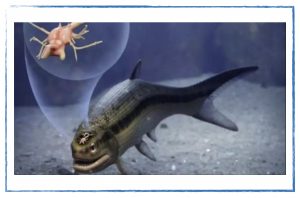Wednesday, 26 February
In class
- Take the Unit 1 exam.
- Complete the teen stress tests.

Monday, 24 February
In class
- Return and discuss a) Notebook Check 1 and b) Reference Quiz 2.
- Review for the Unit 1 exam on Wednesday.
- Make your (required) notecard for the Unit 1 exam.
Assignments
- Finish your notecard before the exam on Wednesday.
Thursday, 20 February
In class
- Take the second reference quiz on the anatomy and physiology of the brain.
- “Is My Blue Your Blue?
- Use this site to test your color recognition.
- Talk through and summarize the discussion prompts for the Stigma, Stereotypes, and Models of the Brain readings.
- Turn in your notebook.
Assignments
- Begin reviewing for the Unit 1 exam by looking at the Learning Outcomes paper.
Tuesday, 18 February
In class
- Prepare your notebooks for collection next class.
- Review for Reference Quiz 2 next class.
- Watch The Power of Belief (and take notes) on the role of belief, for good and bad, in our lives.
Assignments
- Finalize your notebooks to turn in next class.
- Review for Reference Quiz 2 next class.
- Looking ahead, the Unit 1 exam will be given next Wednesday.

Thursday, 13 February
In class
- Summarize the key points of Our Universe Within, Part 1.
- Watch and then summarize the key points of The Brain: Our Universe Within, Part 2: (24:15 – 37:15)
- Describe the changes that occurred during the first evolution of the brain.
- Learn about the mind-body problem and complete the problem set questions.
- Return and review your performance on Reference Quiz 1.
Assignments
- Review the anatomy and physiology of the key sections of the brain as discussed last class for Reference Quiz 2 next Thursday.
- Read the following articles in your textbook:
- Pernicious effects of stigma, p. 82
- Us vs. them, p. 85
- Breaking Stereotype, p. 87

Tuesday, 11 February
In class
- Discuss the neuroscience of reality articles.
- What is the Matrix?
- How do we go about living our lives knowing our experiences might be a bit wrong?
- Learn the key anatomy and physiology of our brains.
- Color code sections of the brain and their primary function.
- Visualize our brains in 3D at www.brainfacts.org
- Make a brain hat.
- Quiz each other on the parts of the brain with the physical brain models.
- Learn about the so-called first evolution of the brain.
- The Brain: Our Universe Within (Part 1: 00:00 – 24:15)
Assignments
- Finish watching Part 1 of the documentary up to time stamp 24:15.
- Update your notebook’s table of contents.
- Review and quiz yourself on the anatomy and physiology of the brain.

Friday, 7 February
In class
- Take Reference Quiz 1 on the neuron and nervous system.
- Fatigue your neurons and note the effects in the Habituation Stations activity.
- Answer The Big Picture questions regarding neurons in your notebook.
Assignments
- Review the readings on the parts and function of the brain before next class.
Wednesday, 5 February
In class
- Review for the neuron and nervous system quiz on Friday.
- Classify the four types of illusions.
- Complete the Illusions Stations activity in your notebook.
Assignments
- Review for the quiz on Friday.
- Read the following two articles before next class:
- Reality is Constructed… p. 71 – 81 and
- The Neuroscience of Reality p. 90 – 98

Monday, 3 February
In class
- Review neuron action potentials.
- Describe the main parts of the nervous system.
- Watch the documentary on perception and then begin classifying the common types of illusions.
Assignments
- Begin reviewing for the first quiz on Friday covering Unit 1, learning outcomes 1 – 4.

Thursday, 30 January
In class
- Make a graph of how a person’s LoC score would change over time.
- Summarize the basic anatomy and physiology of neurons.
- The Neuron problem set
- Two Minute Neuroscience: The Neuron
- Bozeman Science: The Neuron
- Describe the phases of the neuron action potential.
Assignments
- Begin reading and taking notes on p. 16 – 34 in the textbook.

Tuesday, 28 January
In class
- Describe the differences between positivity and optimism.
- In your randomly assigned group, describe a setback or obstacle and how an optimist and pessimist would respond using the Three Ps.
- Analyze the questions asked in the Measuring Optimism Questionnaire and explain the differences between validity and reliability.
- Learn about where in your life you feel the power lies by measuring your Locus of Control.
Assignments
- Submit your About Me to Classroom before the start of class on Thursday.
- Finish reading and taking notes on p. 1 – 15 in your textbook.
- Extra Credit Opportunity: The Mental and Physical Benefits of Handwriting
- Due in class on Friday, 7 February.
Friday, 24 January
In class
- Get a copy of the Brain Studies textbook.
- Share your reactions to the Finnish Schools and Digital Devices video.
- Read and watch research about of the benefits of writing my hand.
- Learn a little more about me and begin thinking about your About Me project.
- Watch the video, Learned Optimism by Martin Seligman and take the Optimism Survey.
Assignments
- Begin work on your About Me presentation. Due in Classroom by the end of the day on Thursday, 30 January.
- On a new page in your notebook (With the title Optimism vs Positivity), explain how you understand the difference between positivity and optimism based upon the two surveys you have taken.
- Begin reading and taking notes (using whichever method you prefer) on p. 1 – 15 in the textbook. Finish this before the start of class on Thursday the 30th next week.

Wednesday, 22 January
In class
- Hello and introductions.
- Read through the course syllabus and ask any questions about course expectations and procedures.
- Compare and contrast the school system in Finland versus in the United States.
- Watch What Makes Finland’s Education System Stand Out?
- Complete the Compare and Contrast paper.
- Learn five behaviors that are commonly seen in successful students.
- SLANT
- Read about the link between a positive attitude and wellbeing. Take a survey to gauge how positive an outlook you have.
Assignments
- Create a table of contents in your course notebook.
- At the top of a blank page, write the title Why I Took Brain Studies.
- Neatly write a 1 -2 paragraph of why you took Brain Studies and what you are hoping to gain from the course.
- Watch Student screen time: Finnish schools reverse policy on digital devices. At the top of a new page in your notebook write a brief reflection of how it compares to what we are doing here at Glenbrook North.


